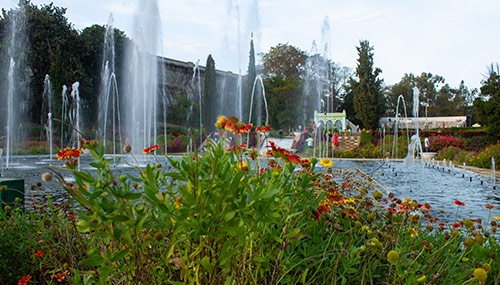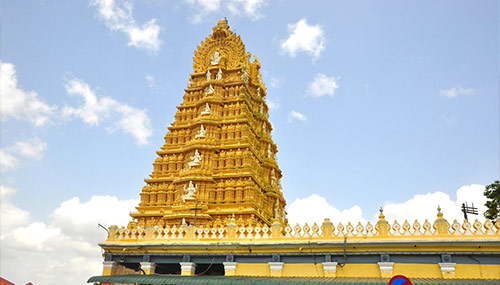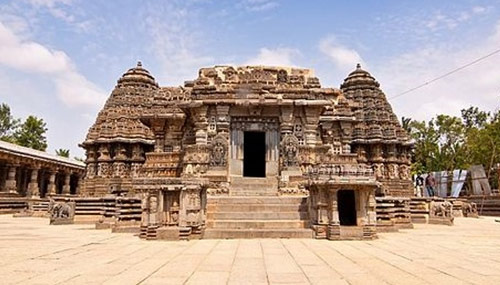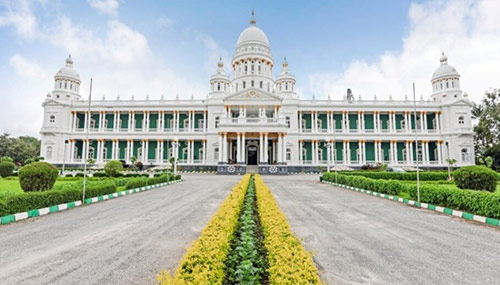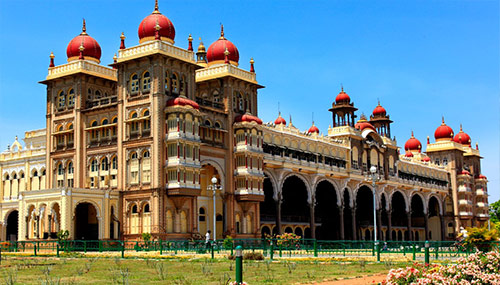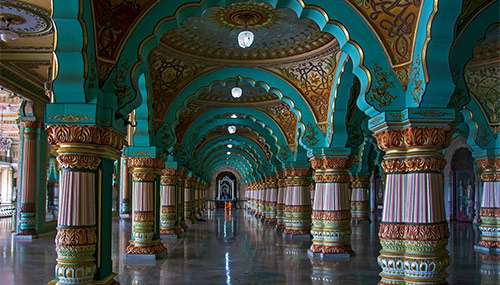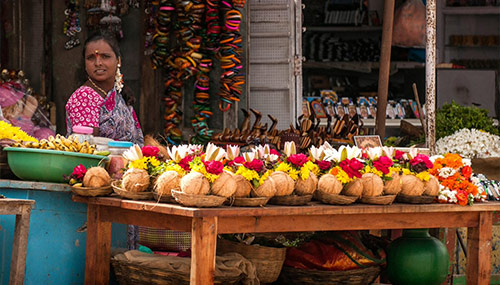Brindavan Garden
Brindavan Gardens is one of the most beautiful gardens in Mysore and a center of tourist attraction. This garden was constructed during the period of Krishnaraja Wodeyar. It is built across the Cauvery river and below the Krishnarajasagar dam. The garden is decorated with huge lawns and various kaleidoscopical courses of flowers. The main attractive feature of the garden is the 'dancing fountain'. The lighting of the garden during Dussehra is done every day and on other days from 7 pm to 8.45 pm.
